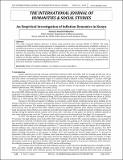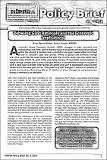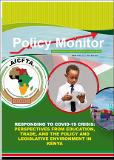An Empirical Investigation of Inflation Dynamics in Kenya
| dc.date.accessioned | 2023-10-09T11:00:03Z | |
| dc.date.available | 2023-10-09T11:00:03Z | |
| dc.date.issued | 2023 | |
| dc.identifier.uri | https://repository.kippra.or.ke/handle/123456789/4533 | |
| dc.description.abstract | This study examined inflation dynamics in Kenya using quarterly data covering 2010Q1 to 2023Q1. The study employed the ARDL bounds testing approach to cointegration to estimate the determinants of inflation in Kenya. It examined the presence of second-round effects of inflation using the gap model approach. The study establishes that the nominal exchange rate, broad money supply, and output gap are the dominant drivers of inflation in Kenya. In addition, the study finds strong evidence of inflation inertia in the short run. Both structural and monetary factors thus drive inflation in Kenya. Second-round effects exist with headline inflation reverting to core inflation and core inflation to headline inflation. As a result, timely and adequate monetary policy action should focus on core inflation and headline inflation. Implementing policies that enhance production and reduce the output gap is essential to rein in the non-monetary component of inflation pressures. | en |
| dc.language.iso | en | en |
| dc.publisher | The International Journal of Humanities & Social Studies | en |
| dc.relation.ispartofseries | Journal Article;2023 | |
| dc.subject | Headline Inflation | en |
| dc.subject | Core Inflation | en |
| dc.subject | Second-round Effects | en |
| dc.subject | Volatile Inflation | en |
| dc.subject | Inflation Dynamics | en |
| dc.title | An Empirical Investigation of Inflation Dynamics in Kenya | en |
| dc.type | Article | en |
| ppr.contributor.author | Omanyo, Daniel |
Files in this item
This item appears in the following Collection(s)
-
Journal Articles [31]



